Find the pages, products, documents, and resources with a full site search.
Advanced Document SearchSurface Preparation Solutions for Salt Water Environments

Superior chloride removal, extended coating life and ability to work near sensitive equipment are just a few of the features that make Sponge-Jet technology indispensable to the US NAVY and many of the largest ship owners and builders worldwide.
- Erection welds and fit-out welds during new construction
- Bilges, ballast tanks and engineering spaces
- Mechanical rooms, accommodations and topside
- Tanks (lube oil, sumps, grey-water and potable-water)
- Submarines, yachts, Naval vessels, cruise ships and super-yachts
- Offshore platforms, drill ships and FPSOs
- Ship-builders, shipyards, dry docks, ship owners and marine contractors
Sponge Blasting with composite abrasive removes chlorides and tough marine coatings, leaving the surface cleaner, more consistent (higher quality) than other surface preparation methods.
Features & Benefits
- Cost savings
- Protect integrity and reliability of equipment
- Improve worker health and safety
- Blast on operating equipment
- Improve community relations and compliance
- Increase asset life and coating performance
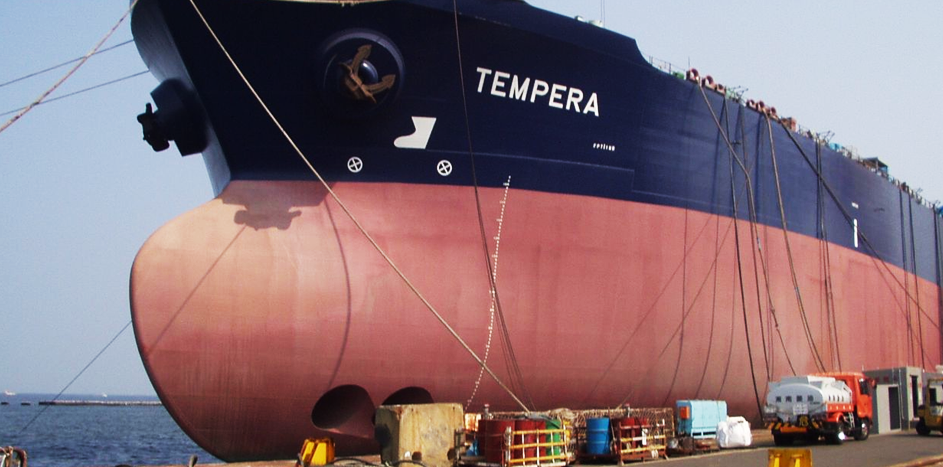
Protecting Erection and Fit-out Welds on Ice Breaker
This unique ice breaking tanker and winner of “Ship of the Year” used Sponge-Jet Silver 30 Sponge Media™ to prepare erection and fit out welds. The owner demanded 100% sponge blasting of the welds. Ship inspection five-years later proved positive (unlike other ships) with virtually no corrosion anywhere on the ship.
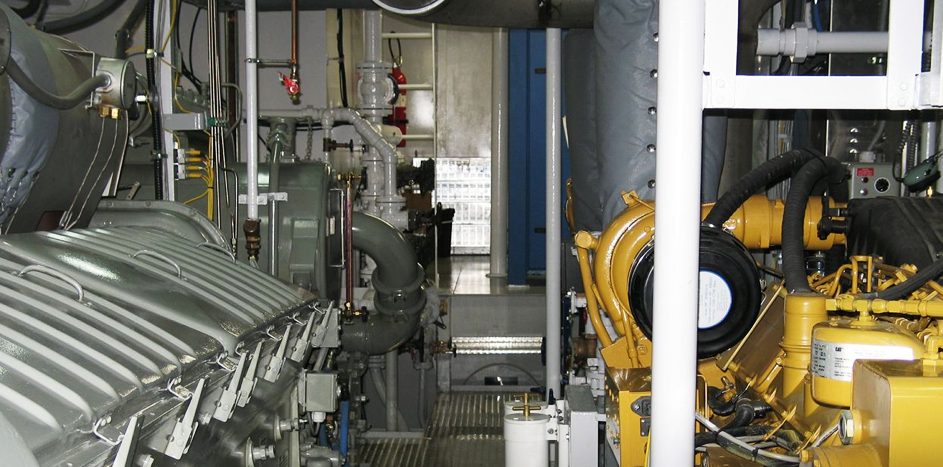
Extending Coating Life in Machinery Spaces
Prior to the use of Sponge Media™ abrasive blasting, these difficult areas were maintained with power tools and constantly being repainted. The short life of power tool prepared coatings drove significant costs and a need for constant maintenance. Sponge-Jet now allows proper preparation and long-term coating life in these challenging machinery spaces.

Ease of Sponge Blasting in Tanks and Confined Spaces
Confined spaces, especially on board ships, offer unique challenges for proper ventilation and access during blasting operations. While some ventilation is still required during Sponge Blasting in these areas, the 98% reduction of dust allows for simple, safer staging of these projects.
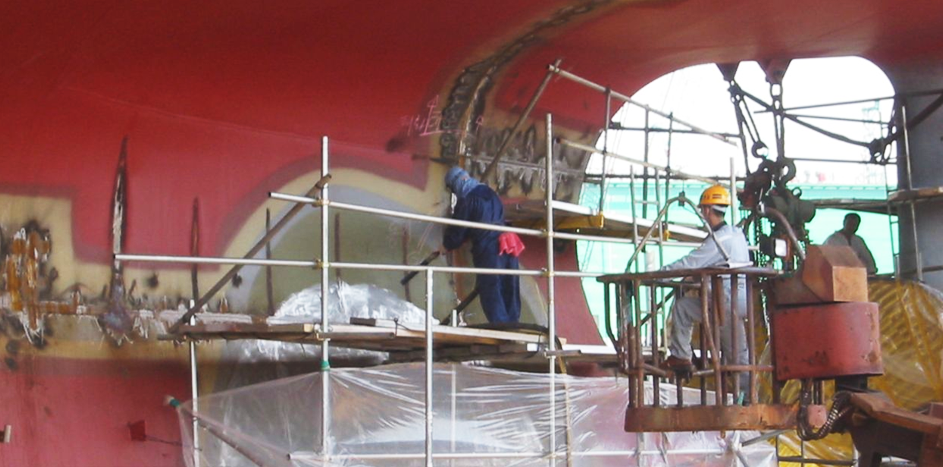
Superior Preparation while Allowing Others to Work Concurrently
Few areas challenge coatings more than here – a combination of high-speed turbulence near the propeller, dis-similar alloys, weld seams & cathodic protection all create challenges to a coating system. Sponge-Jet not only provides a superior surface for coating but allows others to work on the propulsion system at the same time.
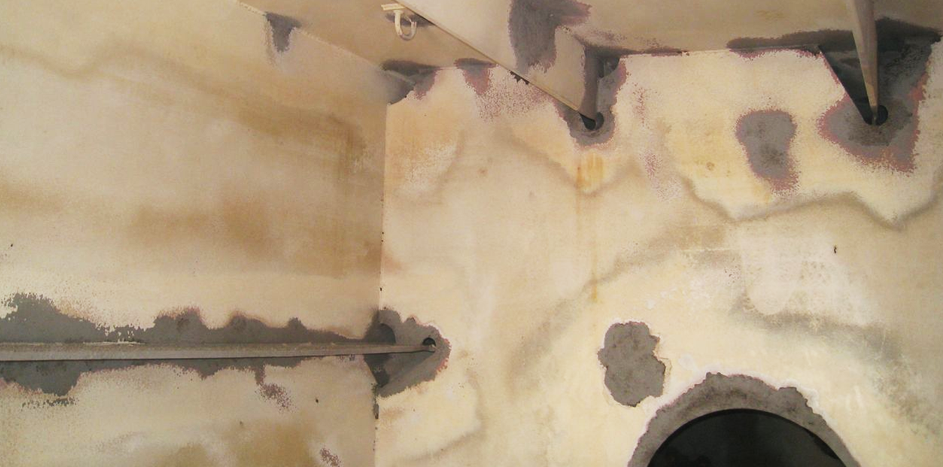
Superior Preparation After Block Construction
Examples of areas often left with less than an ideal coating system. Composite abrasive blasting with Sponge-Jet allows superior preparation after block construction or as part of a ship maintenance, without ricochet damage to adjacent surfaces. Additionally, dust during blasting can be controlled with simple portable negative air ventilators rather than large extraction ducts running outside the ship.

Multiple Blasters with Inspectors ; Even Painters Work Simultaneously
Proper ventilation of large confined spaces with limited access from 15m (50ft) above used to make cargo holds a challenge. Now multiple blasters along with inspectors and even painters can all operate simultaneously with less staging and ventilation challenges than in the past.
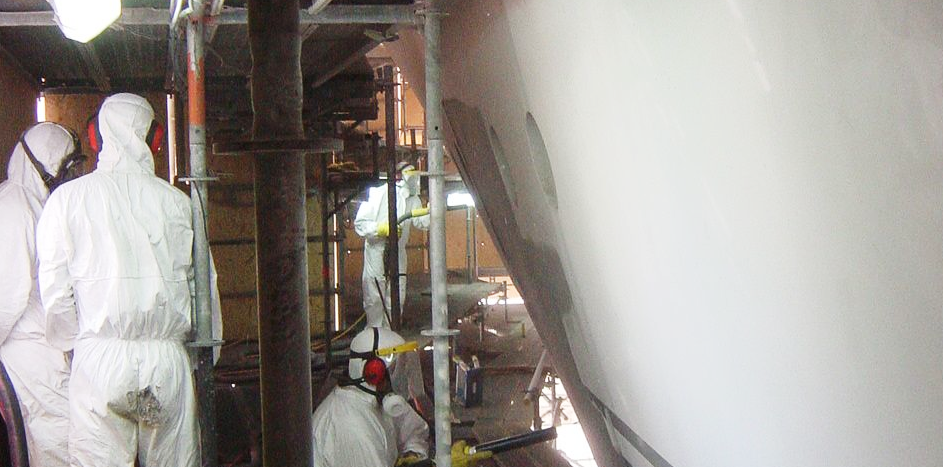
Sponge-Jet MicroContainment™ Limits Dust – Makes Hull Repair Fast and Easy
When the fairing compound separates from its steel hull, the super yacht owner understandably has no interest in having the hull sandblasted - putting dust throughout this prized possession. Sponge-Jet’s MicroContainment™ technology limits the dust so that conventional marine shrink-wrap separating the hull from the deck can be used as containment – and repairs can be made quickly and reliably.

Abrasive Blast in Construction Halls While Trades Continue Fitting Out Ship
Normally it is difficult to abrasive blast inside construction halls while other trades are still fitting out a ship. However, with composite Sponge Media™ abrasives this is a standard procedure – from Australia to USA to Germany. Small barges, aluminum ferries or the largest cruise ships, the choice for blasting in construction halls without interruption of construction – is Sponge Blasting.
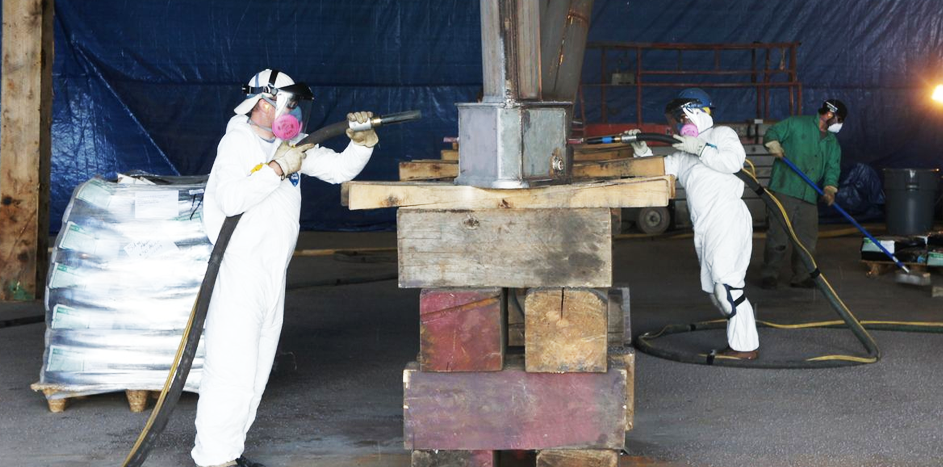
Sponge-Jet Reduces Labor; Allows Simultaneous Blasting, Clean-up and Inspection
Many shipyard blasting projects are staged such that one shift blasts, another crew cleans up followed by inspection. By Sponge Blasting all work can operate concurrently, reducing the time-line, supervision requirements and overall costs. With Sponge-Jet a hardworking three-man crew can support two blasters and one other cleaning and recycling simultaneously.
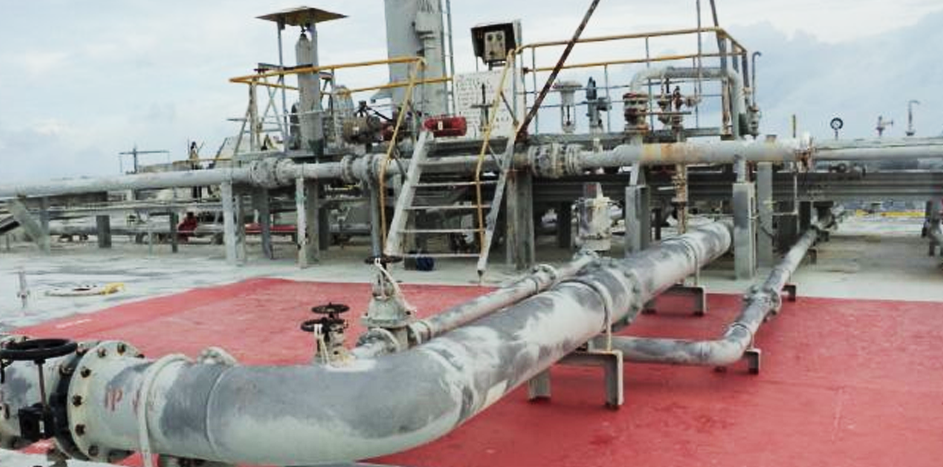
Top-side Blasting of Pipes and Accommodations; Possible with Low-footprint Abrasive Blasting
In dock, during construction or underway, Sponge-Jet technology is used on-board for surface preparation prior to coating ship decks, stairs, accommodations and process piping. Sponge Media™ abrasives are recyclable and therefore require less material to dispose, transport and haul to/from the site. The process also greatly suppresses dust which protects sensitive equipment and nearby local environment.
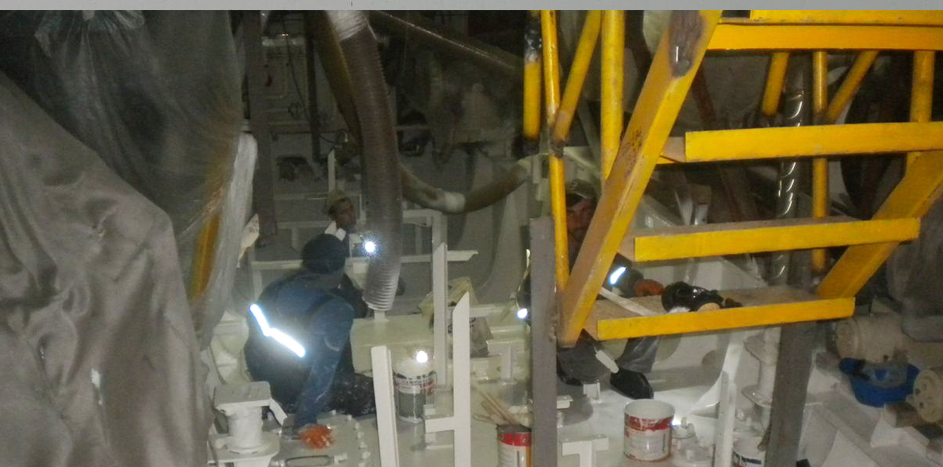
Stop Your Marine Coating Projects From Becoming One of the 75% of Coating Failures
Yachts, ferries, cruise ships, military vessels, FPSOs and commercial ships of every type need longevity from their coating systems. Over 75% of coating performance can be attributed to surface preparation. Sponge-Jets has a track record of adoption and use in every marine segment, year after year.
Centro Risorse Sponge-Jet
Risorse
Centro Risorse Sponge-Jet
Risorse

819 Restoration on Harpers Ferry Class Dock Landing Ship
Case history about Sponge-Jet replacing hand tools on sidewall and catwalk restoration of USS Carter…
Scarica
Low Dust Ballast Tank Blasting with Sponge-Jet
This blaster is conducting confined space, low dust abrasive blasting in a ship’s ballast tank…
動画を表示する

Marine Overview Video
Sponge-Jet’s low dust abrasive blasting technology is widely used in the marine industry by mi…
動画を表示する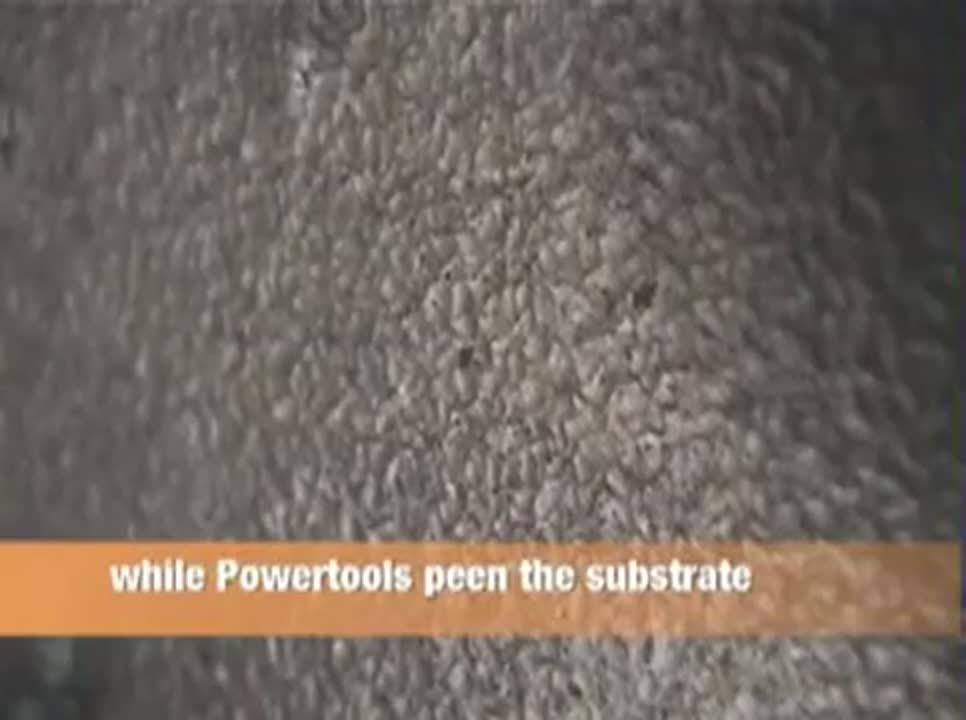

Prep for Life Marine Maintenance Tech
PDF magazine article describes modern marine coating’s higher anchor profile requirements and the …
Scarica
Blog
Recent Blog Posts
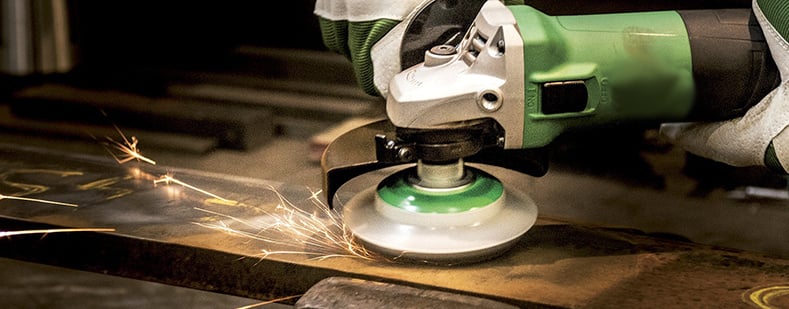
Power Tooling vs Abrasive Blasting for Surface Prep
Power tooling is a method of surface preparation commonly used in tight spaces where access is limited. Pneumatic, electric, and hand tools such as angle grinders, needle guns, wire wheels, wire brushes, scrapers, and sanding pads can be used to remove rust, paint, and other contaminants from a surface.
Per saperne di più >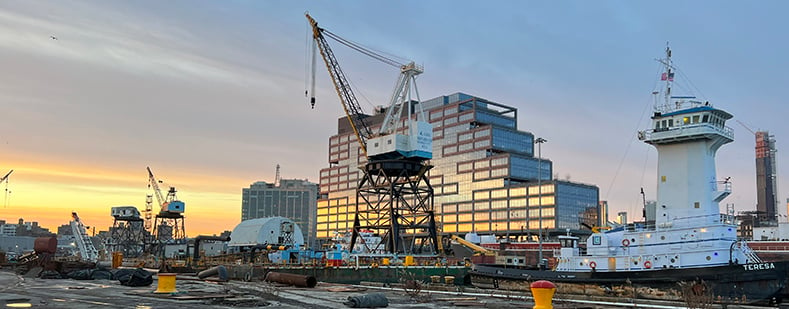
Sponge Media and the Marine Industry
Both Freshwater and Saltwater vessels see all sorts of contaminants and corrosion throughout their service life. Corrosion can threaten everything on ships, from power gen and water storage tanks, to their general structural integrity. In order to overcome these threats, proper surface preparation is key.
Per saperne di più >
